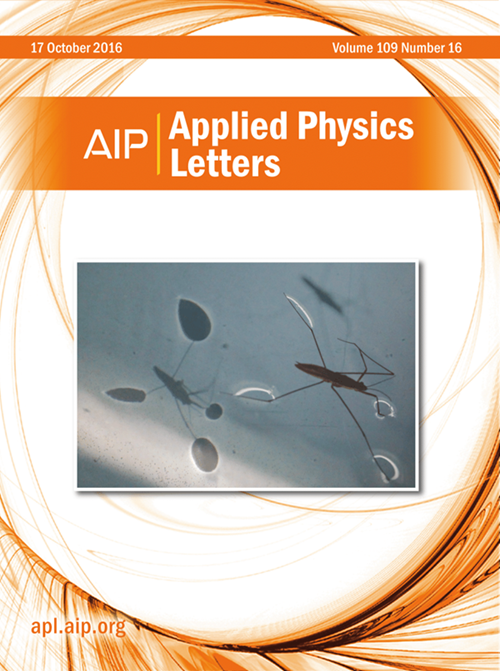Magnetic phase diagram of Cr2Te3 revisited by ac magnetostrictive coefficient
IF 3.6
2区 物理与天体物理
Q2 PHYSICS, APPLIED
引用次数: 0
Abstract
Two-dimensional (2D) magnetic materials have attracted considerable interest owing to their potential applications in spintronics and fundamental investigations into low-dimensional magnetism. Cr2Te3, a quasi-2D non-van der Waals magnet, exhibits a complex magnetic phase diagram due to competing magnetic interactions within and between layers. However, the precise nature and evolution of these magnetic phases remain unclear. Here, we utilize an ultrahigh-sensitive composite magnetoelectric technique, which probes the ac magnetostrictive coefficient, to systematically explore the temperature–magnetic field phase diagram of Cr2Te3 single crystals. Our results reveal the coexistence of multiple magnetic phases, including canted ferromagnetic, antiferromagnetic, and paramagnetic states. An additional canted ferromagnetic phase and a possible triple point are also proposed. The updated phase diagram provides deeper insights into the specific spin configurations associated with each phase. These findings further highlight the decoupled magnetic ordering between the Cr1/Cr3 layers and the Cr2 layer near the magnetic ordering temperatures.用交流磁致伸缩系数重新研究Cr2Te3的磁相图
二维(2D)磁性材料由于其在自旋电子学和低维磁性基础研究中的潜在应用而引起了相当大的兴趣。Cr2Te3是一种准二维非范德华磁体,由于层内和层间相互竞争的磁相互作用,呈现出复杂的磁相图。然而,这些磁相的确切性质和演变仍然不清楚。本文利用一种探测交流磁致伸缩系数的超高灵敏度复合磁电技术,系统地研究了Cr2Te3单晶的温度-磁场相图。我们的研究结果揭示了多种磁相的共存,包括倾斜的铁磁态、反铁磁态和顺磁态。还提出了一个额外的倾斜铁磁相位和一个可能的三相点。更新的相图提供了对与每个相相关的特定自旋配置的更深入的了解。这些发现进一步强调了Cr1/Cr3层与Cr2层之间在磁有序温度附近的解耦性。
本文章由计算机程序翻译,如有差异,请以英文原文为准。
求助全文
约1分钟内获得全文
求助全文
来源期刊

Applied Physics Letters
物理-物理:应用
CiteScore
6.40
自引率
10.00%
发文量
1821
审稿时长
1.6 months
期刊介绍:
Applied Physics Letters (APL) features concise, up-to-date reports on significant new findings in applied physics. Emphasizing rapid dissemination of key data and new physical insights, APL offers prompt publication of new experimental and theoretical papers reporting applications of physics phenomena to all branches of science, engineering, and modern technology.
In addition to regular articles, the journal also publishes invited Fast Track, Perspectives, and in-depth Editorials which report on cutting-edge areas in applied physics.
APL Perspectives are forward-looking invited letters which highlight recent developments or discoveries. Emphasis is placed on very recent developments, potentially disruptive technologies, open questions and possible solutions. They also include a mini-roadmap detailing where the community should direct efforts in order for the phenomena to be viable for application and the challenges associated with meeting that performance threshold. Perspectives are characterized by personal viewpoints and opinions of recognized experts in the field.
Fast Track articles are invited original research articles that report results that are particularly novel and important or provide a significant advancement in an emerging field. Because of the urgency and scientific importance of the work, the peer review process is accelerated. If, during the review process, it becomes apparent that the paper does not meet the Fast Track criterion, it is returned to a normal track.
 求助内容:
求助内容: 应助结果提醒方式:
应助结果提醒方式:


